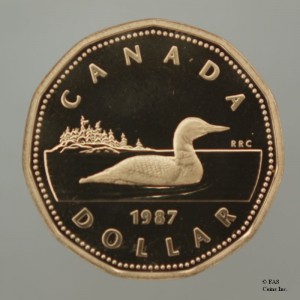On this day in 1984, Brian Mulroney was sworn in as Canada’s 18th prime minister. While you won’t find Mulroney’s face on circulating coins, you can thank him as the head of a government that brought in one of Canada’s most significant circulating currency changes. Can you guess what it is? Hint: think 1987.
Yes, the shiny, gold-coloured, 11-sided coin nicknamed for the foul on its face, was introduced on June 30 of that year as a cost-savings measure by Mulroney’s Conservative government.
The loonies were intended as a longer-lasting currency than the green and white paper bills that would last just nine to 12 months on average. At the time, Canada also had a large, silver-coloured dollar coin, but it was seldom used by anyone other than coin collectors.
By switching from a bill to a coin, the government calculated it could save taxpayers $175 million to $250 million over 20 years.
According to an online immigration guide that helps newcomers to Canada, offering common terms and slang and a bit of history along the way, the loonie was often referred to as “Mulroney’s loonie” because of the catchy rhyme, or the “Mul-loonie,” in its early years.
Clearly, that nickname didn’t stick.


